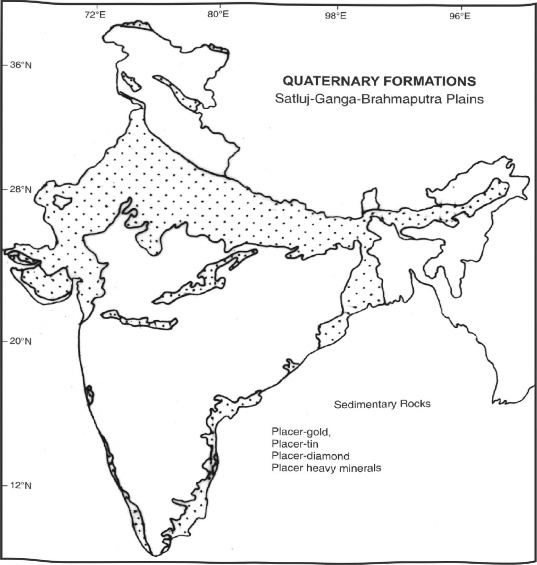THE QUATERNARY PERIOD (THE PLEISTOCENE AND RECENT FORMATIONS)
Quaternary is the name proposed for very recent deposits, which contain fossils of species with living representatives. The Northern Plains of India came into existence during the Pleistocene Period (Fig. 1.8). During the Quaternary Period, the ice-sheets descended to as low as 1500 metres in altitude. The third physical division of India which is the Great Indo-Gangetic-Brahmaputra Plain had not figured at all till the Quaternary Period. The bottom configuration of this plain occupies largely a synclinal basin, called foredeep, which is a downwarp of the Himalayan foreland of variable depth, formed concommitantly with the rise of the Himalayas to the north. The Pleistocene period is marked
by Ice Age and glaciation on a large scale in the Northern Hemisphere. The moraine deposits and the karewa formations of Kashmir Valley and the Bhadarwa (Doda District ofjammu Division) are of the Pleistocene period. It forms the terraces of the Jhelum, on the Hanks of the Pir-Panjal. The thickness of the karewas at places is up to 1400 metres. The river terraces of the Narmada, Tap*’ Godavari, Krishna, and Kaveri, etc. are also of the Pleistocene Period.

